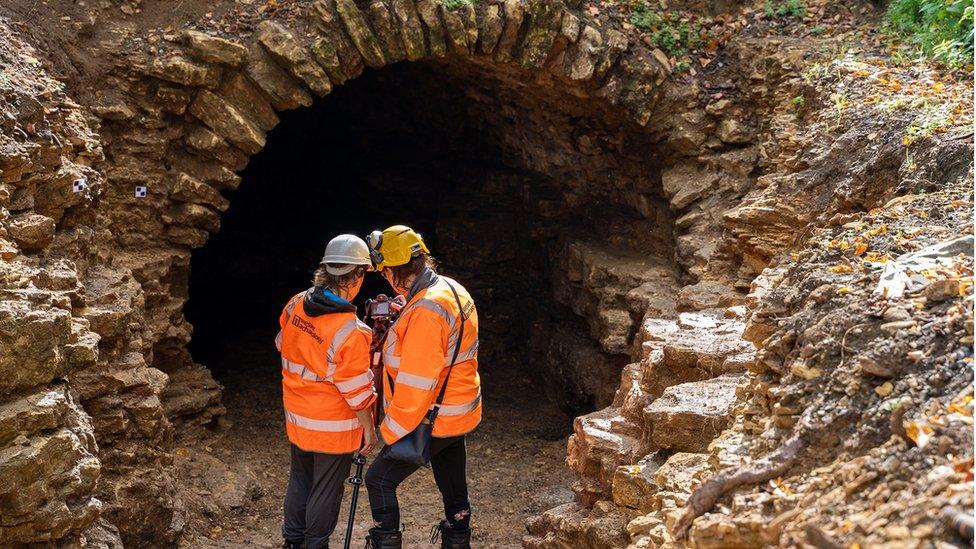Dig unearths pre-historic significance of Quantocks
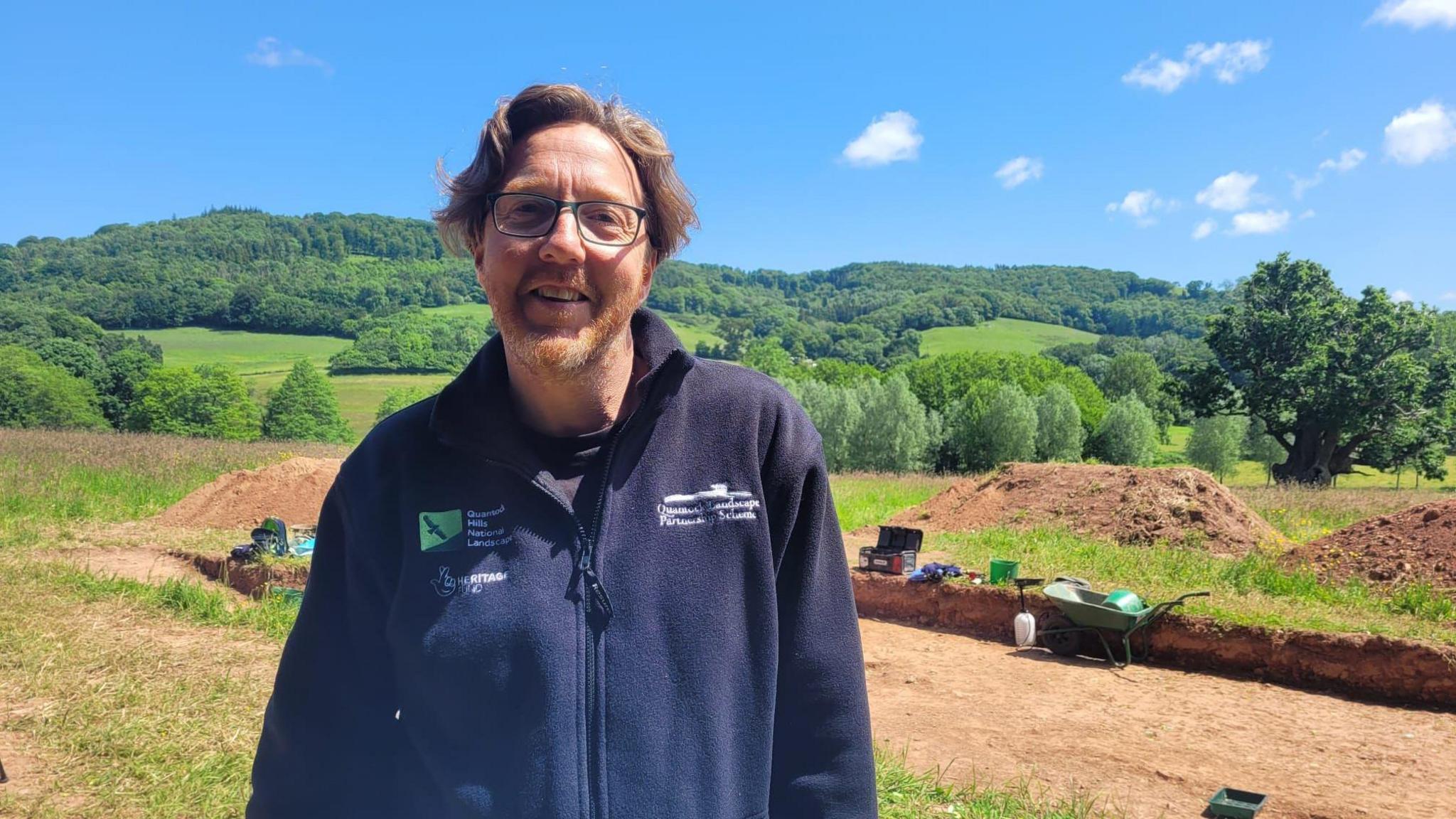
The site has been significant to people throughout the ages, Mr Broadbent said
- Published
A team of professional and amateur archaeologists has been digging for prehistoric, Roman, medieval, and Georgian remains.
The dig at Cothelstone Farm in the Quantocks is funded by the National Lottery Heritage Fund and gives volunteers the opportunity to learn how to excavate a site.
The site was significant to people during the Bronze Age right up until medieval times, archaeologists said.
Dan Broadbent, historic heritage officer for the Quantock Landscape Partnership Scheme, said: "What makes it so special is the idea that you have a single place looking out at this fantastic view which was clearly important for people in the past over a long period."
The scheme, alongside charity DigVentures, organised the dig after seeing aerial images of the site which showed "potential features".
"Our aim was to really understand those features, ideally what their function may have been and how they might have related to each other," Mr Broadbent said.

Volunteers from the local area were digging at the site, alongside professional archaeologists
"We appear to have people here using this site in the Bronze Age, we've got Roman pottery, and then we've got this later phase of early medieval, probably Saxon burials," Mr Broadbent added.
"So people keep returning to this spot, seeing it as significant and that to me is what makes it really, really special."
Volunteers from the local area were digging at the site, alongside professional archaeologists.
"We've got a good group of volunteers who have been with us over the years and I think some genuine friendships have been formed," Mr Broadbent said.
"There's something about the nature of doing archaeology with likeminded people, there's also something really mindful about it.
"The point of our work is to make it available to the local community."
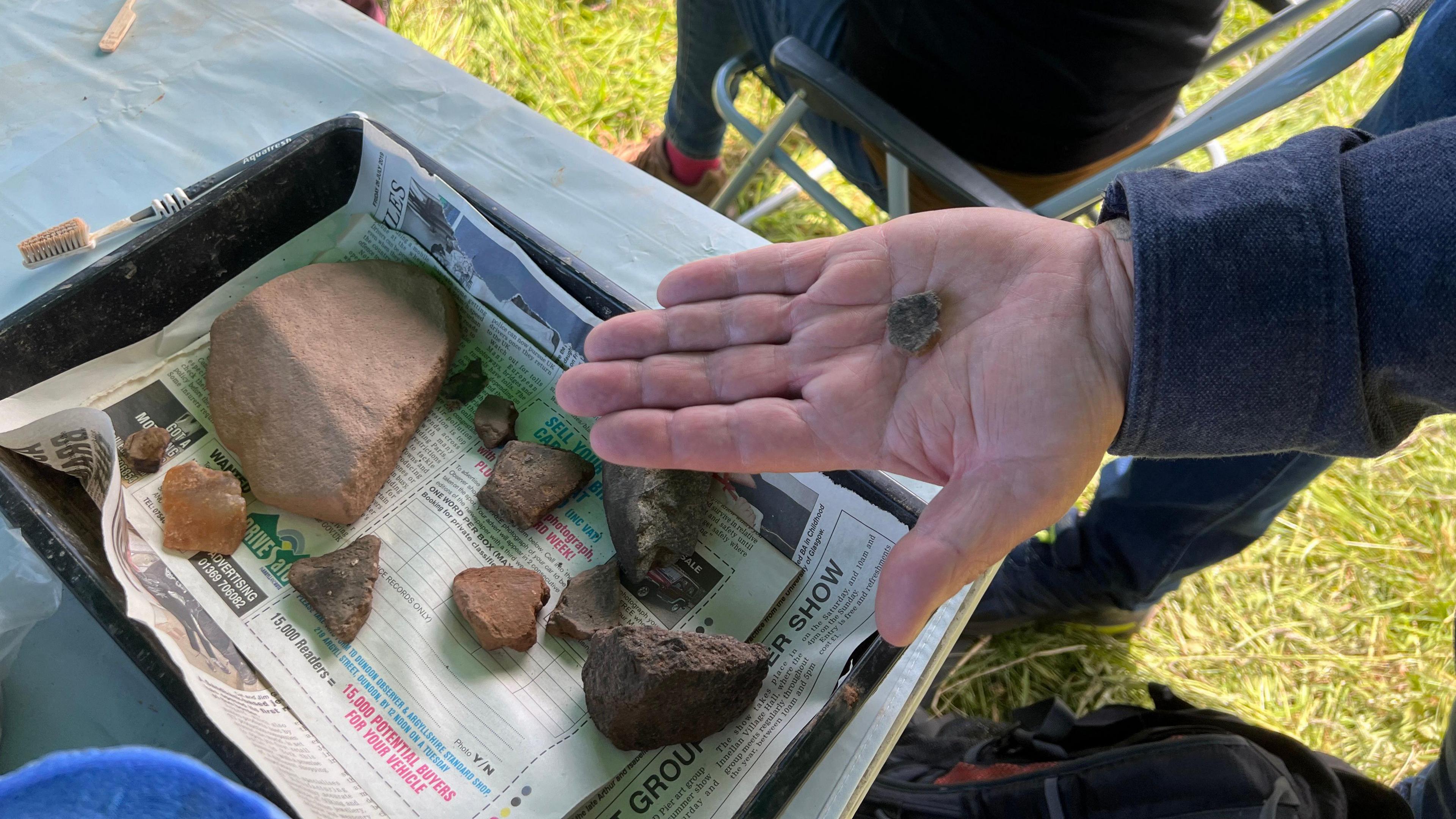
Volunteers found arrowheads and evidence of pre-historic presence
Harriet Tatton, who is an archaeologist working with DigVentures, said the dig had been "worth it".
"We had an arrowhead come out of one of our large ditches, which is very cool," Ms Tatton said.
"As the story has evolved, we discovered that the ring ditch was probably visible into medieval times, the Romans would have seen it, the Anglo-Saxons would have seen it, so being able to tell that story has been very cool."
The ring ditch was likely a ceremonial site during the Bronze Age.
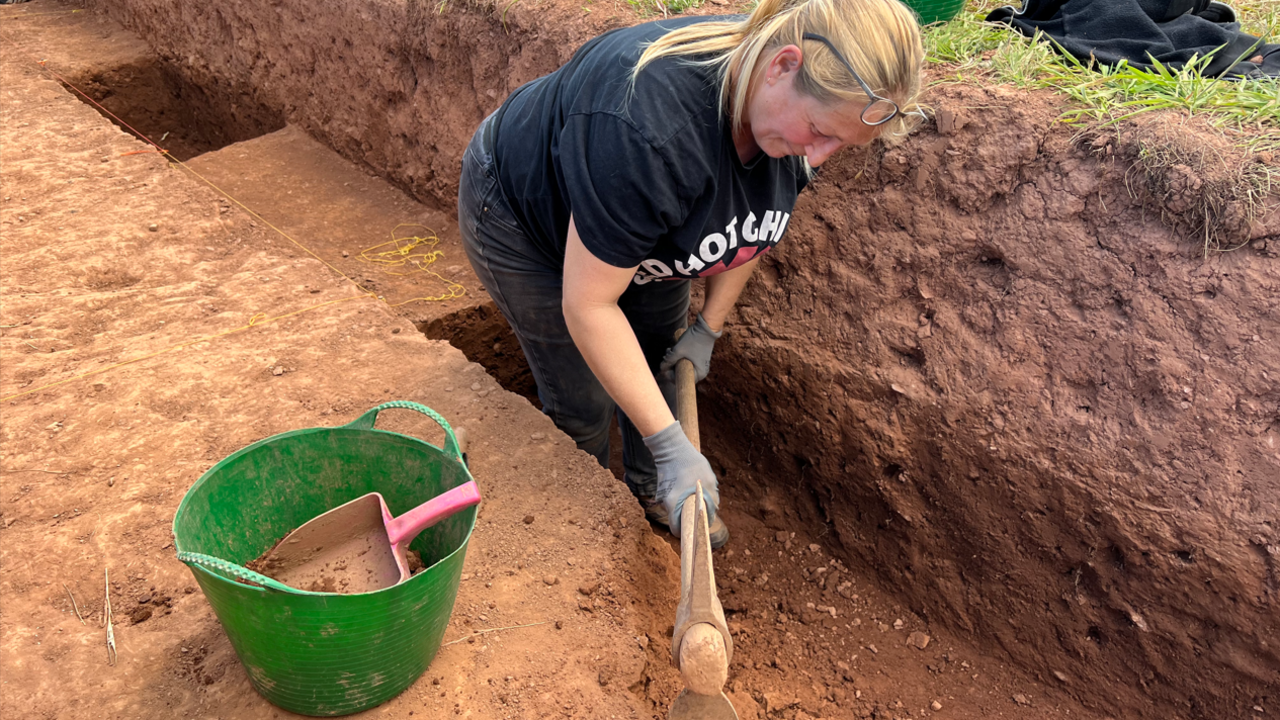
"My personal favourite part is to make people's dreams come true," Ms Tatton said
After recording all the findings, the team will begin cleaning up the site.
"We don't just leave the site like this, I think there'll be some very unhappy sheep if we left big holes in the ground.
"We will get a digger in who will backfill everything. We'll re-seed the grass and in a few months time it will be like we were never here."
Ms Tatton added: "My personal favourite part is to be able to make people's dreams come true. Because we work with amateur volunteers, a lot of them watched Time Team and have been really interested."
Follow BBC Somerset on Facebook, external and X, external. Send your story ideas to us on email or via WhatsApp on 0800 313 4630.
Related topics
- Published7 January 2020
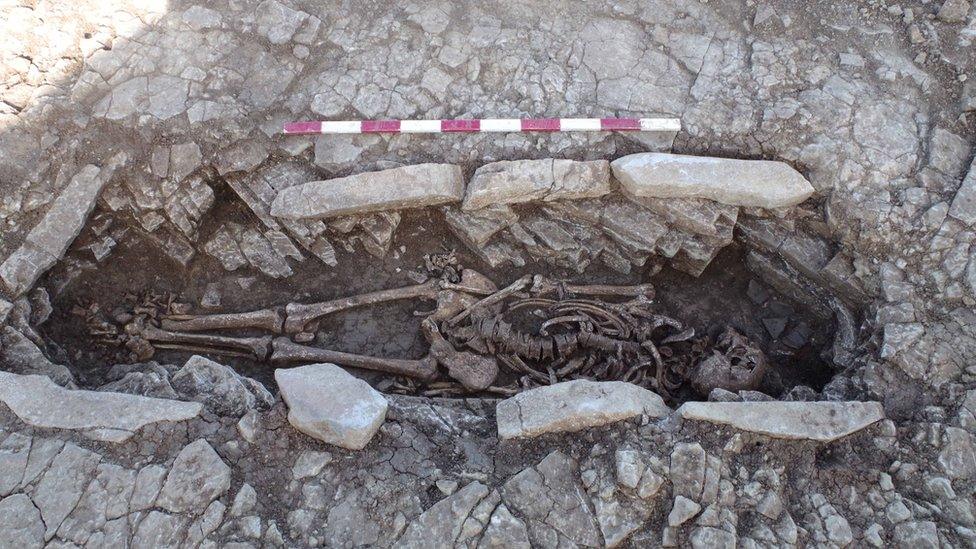
- Published3 November 2023
